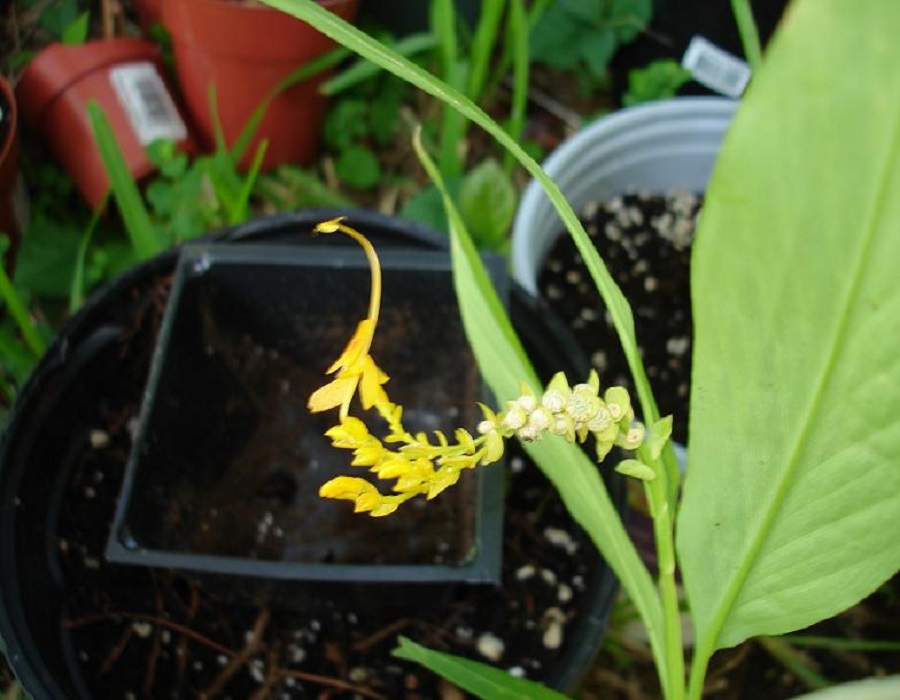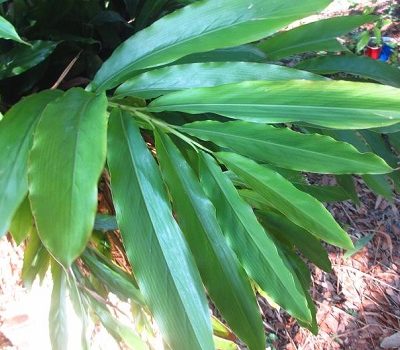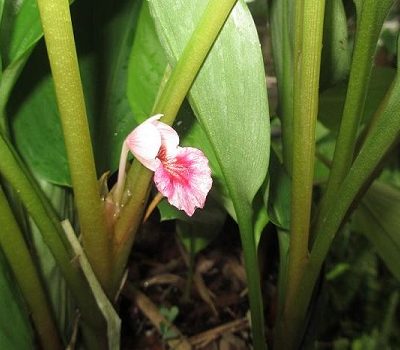orange fairy ginger
In parts of China it is thought that the flowers of this plant ward off evil spirits. The dainty little flowers really do look like fairies or some other magical creatures dancing in your garden. This is such a beautiful little plant, and so easy to grow. Everyone should have one of these in their collection. Northerners can enjoy them too since they go completely dormant, they can be dug up and Wintered indoors in a paper bag.
The foliage emerges in Spring and begins blooming soon after. Each pseudostem develops a terminal pendant inflorescence with orange “dancing lady” shaped flowers. At the base of each inflorescence is a cluster of bulbils. These will fall off and grow the following Spring. As a result of these bulbils, this plant can be very invasive.
Origin
Southeast Asia (Bangladesh; Bhutan; China; India; Myanmar; Nepal; Thailand; Viet Nam)
Binomial nomenclature
Globba schomburgkii
Common names
Fairy ginger, Dancing lady ginger
Description
Globba schomburgkii grows clusters of pseudostems with lanceolate leaves. Each pseudostem produces a terminal inflorescence. The small orange dancing lady shaped flowers, bloom sequentially. The plant remains in bloom for several months, making it an excellent specimen in the garden. At the base of the inflorescence, many bulbils form. These bulbils have a roughened surface and are more or less spherical in shape. The bulbils will drop off and grow in the following Spring. The bulbils are not seeds, but are instead a form of asexual reproduction.
Height
18″
Temperature/Zone
USDA zone 9, 32°F or higher. In zones lower than 9, they can be Wintered indoors once they go dormant.
Light
Filtered shade.
Water
Keep them evenly moist during the warm months, but allow them to dry out during the winter dormancy.
Fertilizer
I use a fertilizer formulated for tomatoes. Do not fertilize during the Winter.
Cultivation
G. schomburgkii prefers rich, well drained soil.
Pests
The only pests I’ve found on this plant are root mealy bugs. I use imidacloprid, a systemic pesticide.





